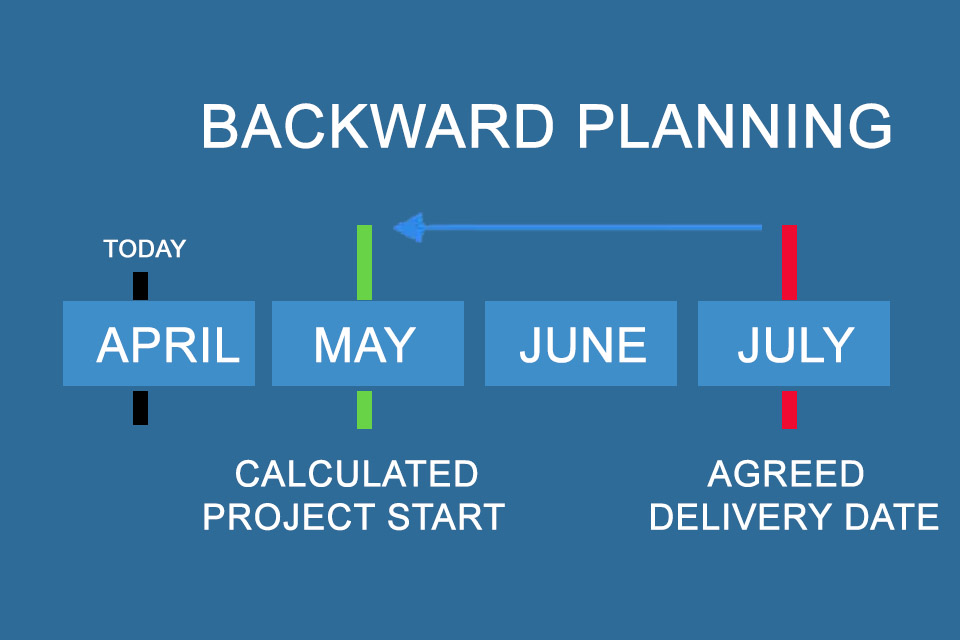What is Backward Planning?
Smartpedia: Backward planning – also known as backward calculation or backward scheduling – is a technique in which projects or product developments are planned from the end.
Backward planning – calculating projects from the end to the beginning
Backward planning is a technique for planning projects, ventures or even product developments from the end. It is also referred to as backward calculation or backward scheduling and is used, for example, when
- a customer specifies a delivery date on which he needs goods for his own just-in-time production.
- an event such as a trade fair takes place on a specific date and at this time all goods must be on site in the appropriate quantity and quality.
- a competitor has announced a product on a certain date and the competition wants to bring its product onto the market earlier.
Based on the defined deadline, the temporal and logical processes – also referred to as activities, steps, work packages, tasks, actions, assignments etc. – are planned step by step and backwards to the start of the project. In project network planning, backward planning is used to determine the latest status of all activities so that the defined deadline can be met. Together with the forward planning, which determines the earliest position of all operations, any buffer times can be determined.
Notes:
Here you can find a detailed description of Precedence Diagrams.
And here you can find additional information from our t2informatik Blog:



